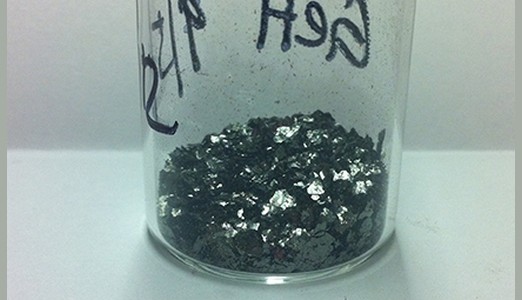Redesigned Germanium Better Than Silicon
on

The same material that formed the first primitive transistors more than 60 years ago can be modified in a new way to advance future electronics, according to a new study. Chemists at The Ohio State University have developed the technology for making a one-atom-thick sheet of germanium, and found that it conducts electrons more than ten times faster than silicon and five times faster than conventional germanium.
The material’s structure is closely related to that of graphene—a much-touted two-dimensional material comprised of single layers of carbon atoms. In nature, germanium tends to form multilayered crystals in which each atomic layer is bonded together; the single-atom layer is normally unstable. To get around this problem, the scientists created multi-layered germanium crystals with calcium atoms wedged between the layers. Then they dissolved away the calcium with water, and plugged the empty chemical bonds that were left behind with hydrogen. The result: they were able to peel off individual layers of germanane.
Studded with hydrogen atoms, germanane is even more chemically stable than traditional silicon. It won’t oxidize in air and water, as silicon does. That makes germanane easy to work with using conventional chip manufacturing techniques.


Discussion (0 comments)